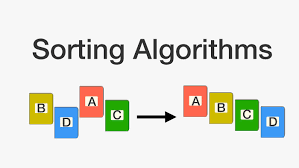C# : Most used Five Sorting Algorithms in .Net

Sorting algorithms are fundamental in computer science and play a crucial role in various applications. In this blog post, we'll delve into five popular sorting algorithms implemented in C#: Bubble Sort, Selection Sort, Insertion Sort, Merge Sort, and Quick Sort. We'll explore each algorithm's principles, implementation details, and performance characteristics.
1. Bubble Sort: Bubble Sort is a simple comparison-based sorting algorithm that repeatedly steps through the list, compares adjacent elements, and swaps them if they are in the wrong order.
Bubble Sort Implementation in C#:
public static void BubbleSort(int[] arr)
{
int n = arr.Length;
for (int i = 0; i < n - 1; i++)
{
for (int j = 0; j < n - i - 1; j++)
{
if (arr[j] > arr[j + 1])
{
int temp = arr[j];
arr[j] = arr[j + 1];
arr[j + 1] = temp;
}
}
}
}
2. Selection Sort: Selection Sort is an in-place comparison-based sorting algorithm that divides the input list into two parts: the sorted sublist and the unsorted sublist. It repeatedly selects the minimum element from the unsorted sublist and swaps it with the leftmost unsorted element.
Selection Sort Implementation in C#:
public static void SelectionSort(int[] arr)
{
int n = arr.Length;
for (int i = 0; i < n - 1; i++)
{
int minIndex = i;
for (int j = i + 1; j < n; j++)
{
if (arr[j] < arr[minIndex])
{
minIndex = j;
}
}
int temp = arr[minIndex];
arr[minIndex] = arr[i];
arr[i] = temp;
}
}
3. Insertion Sort: Insertion Sort is a simple comparison-based sorting algorithm that builds the final sorted array one element at a time by repeatedly inserting the next element into its correct position in the sorted sublist.
Insertion Sort Implementation in C#:
public static void InsertionSort(int[] arr)
{
int n = arr.Length;
for (int i = 1; i < n; i++)
{
int key = arr[i];
int j = i - 1;
while (j >= 0 && arr[j] > key)
{
arr[j + 1] = arr[j];
j--;
}
arr[j + 1] = key;
}
}
4. Merge Sort: Merge Sort is a comparison-based sorting algorithm that divides the input array into two halves, recursively sorts each half, and then merges the sorted halves.
Merge Sort Implementation in C#:
public static void MergeSort(int[] arr)
{
if (arr.Length <= 1)
return;
int mid = arr.Length / 2;
int[] left = new int[mid];
int[] right = new int[arr.Length - mid];
Array.Copy(arr, 0, left, 0, mid);
Array.Copy(arr, mid, right, 0, arr.Length - mid);
MergeSort(left);
MergeSort(right);
Merge(left, right, arr);
}
private static void Merge(int[] left, int[] right, int[] arr)
{
int i = 0, j = 0, k = 0;
while (i < left.Length && j < right.Length)
{
if (left[i] <= right[j])
{
arr[k++] = left[i++];
}
else
{
arr[k++] = right[j++];
}
}
while (i < left.Length)
{
arr[k++] = left[i++];
}
while (j < right.Length)
{
arr[k++] = right[j++];
}
}
5. Quick Sort: Quick Sort is a comparison-based sorting algorithm that divides the input array into two partitions, recursively sorts each partition, and combines them.
Quick Sort Implementation in C#:
public static void QuickSort(int[] arr, int low, int high)
{
if (low < high)
{
int pi = Partition(arr, low, high);
QuickSort(arr, low, pi - 1);
QuickSort(arr, pi + 1, high);
}
}
private static int Partition(int[] arr, int low, int high)
{
int pivot = arr[high];
int i = low - 1;
for (int j = low; j < high; j++)
{
if (arr[j] < pivot)
{
i++;
int temp = arr[i];
arr[i] = arr[j];
arr[j] = temp;
}
}
int temp1 = arr[i + 1];
arr[i + 1] = arr[high];
arr[high] = temp1;
return i + 1;
}
Conclusion: These five sorting algorithms—Bubble Sort, Selection Sort, Insertion Sort, Merge Sort, and Quick Sort—differ in their implementation strategies and performance characteristics. By understanding and implementing these algorithms in C#, developers can effectively tackle sorting tasks and optimize the performance of their applications.

